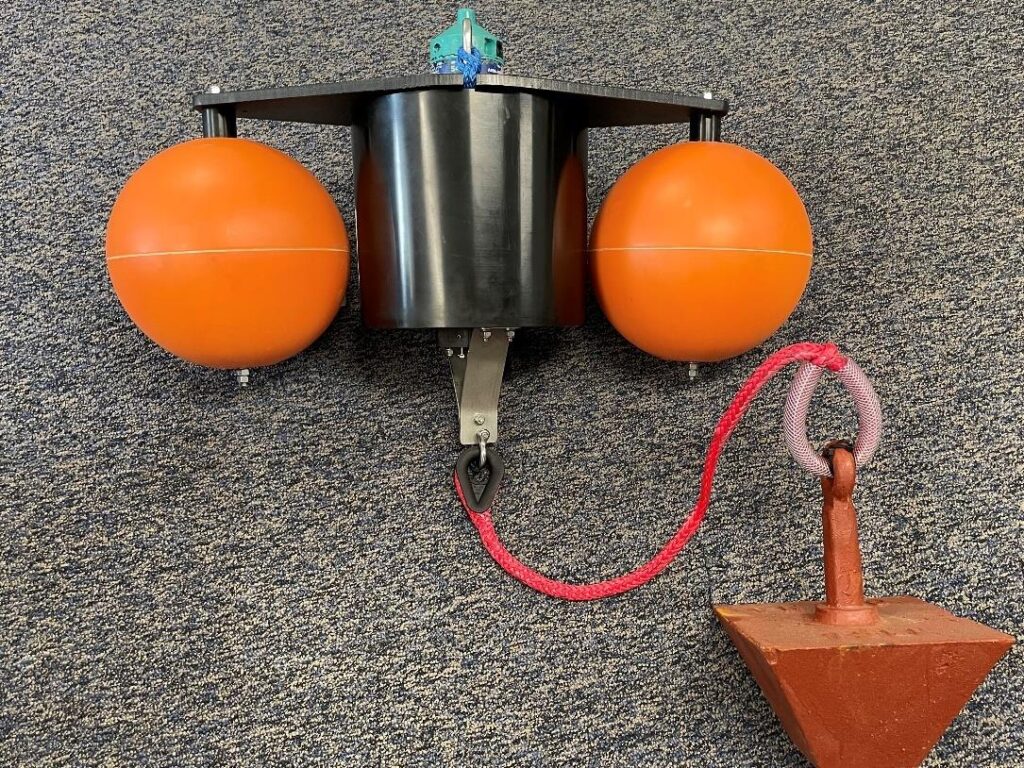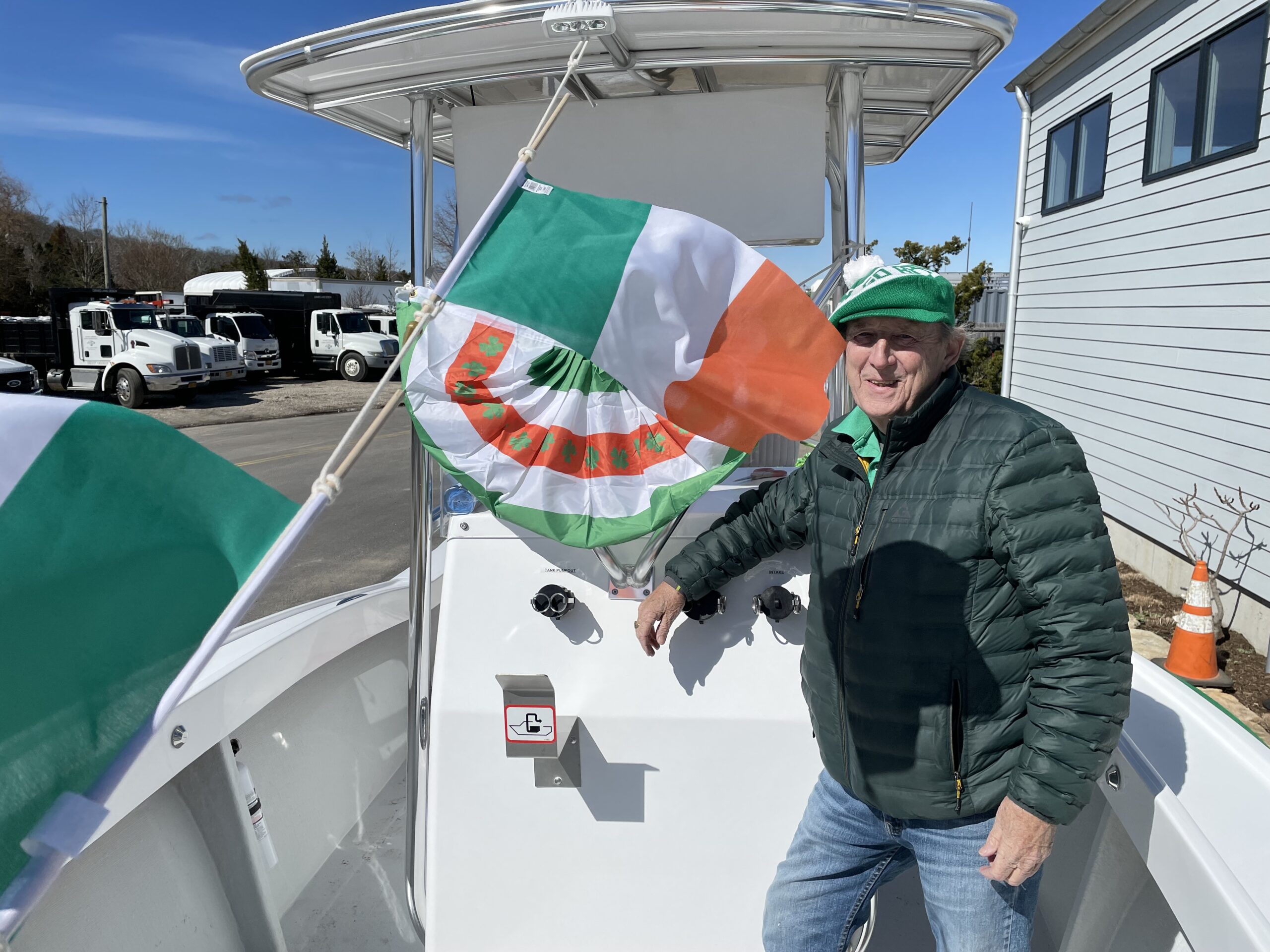First Hamptons PRIDE PARADE! To register and for more information: hamptonspride.org Email: hamptonsprideinc@gmail.com
Fisheries study – moorings As required by the terms of the lease agreement with the Trustees and Orsted the developer of the South Fork Wind Farm project, the Trustees secured a separate fund to study the fisheries before, during, and after construction to evaluate and determine if any possible nearshore impacts on the migratory fish and other marine species occurred. The study is being done over a five year period. The telemetry array covers the cable route in New York State waters, extending to seven miles offshore. “This is not new,” John Aldred of the trustees said. “This is the
Reduce Balloon Pollution and Save Marine Life! South Fork’s 3rd Annual Balloons for Sharks Tournament!
Trustees meeting in Town Hall April 11, 2022. Photo: Christopher Walsh NYS Open Meeting Laws: The East Hampton Town Trustees will consider a permanent law that permits them to conduct “hybrid” meetings utilizing video teleconferencing for both the trustees and public as a result of the COVID-19 generated initiative. For more information, read the entire article in the tab below. East Hampton Star article
Coastal Assessment Resiliency Plan (CARP) Released this week, the Town of East Hampton has received an update on the development of coastal erosion and what the future of the topography of the eastern end of Long Island will look like given changes from sea level rise. Consultants predict that based on current developments, “Over the next 50 years, low-lying areas will be permanently submerged under water and the town will become a series of islands if we don’t take action now. The need to begin resilience projects and policies is urgent.” Article by Michael Wright. Development Shifts, Montauk ‘Levee’ Among
Photos David Cataletto East Hampton Town Trustee David Cataletto has been busy posting our new kayak signs up throughout town- Many thanks to the East Hampton Highway Department’s Kenneth Galanty. The lottery winners have a sticker for this season. Only those kayak owners who won the lottery may use the racks. Locations of the kayak racks are: Settler’s Landing, Fresh Pond, Accabonac Harbor’s Louse Point and Gerard Drive, and Mile Hill Road / NW Harbor. Questions? Call the our office: 631-267-8688.
Seeking beach monitor volunteers: Piping plovers are expected back on our EH beaches soon, and are an endangered, protected species. Read more about the plover program at http://ehamptonny.gov/244/Endangered-Species-Management… and please call the Natural Resources Dept. at 631-324-0496 if you can volunteer. * Community service and a stipend available!
“We are a county that will no longer allow our water quality to go unaddressed, but will come together to Reclaim Our Water.” Suffolk County Executive Steve Bellone reclaimourwater.info Click on the tab to access the Reclaim Our Water website that offers information about how to apply for a new and technologically advanced septic system. The website includes information about possible grant funding assistance from the county for qualified homeowners, answers your questions, and features the latest news about septic systems that are helping to improve water quality. All Long Island residents live in a large watershed- Reclaim Our Water
Christopher Gobler, Ph.D. of Stony Brook Southampton University Wednesday, April 6th @ 7:30pm In person or by webinar– see below for instructions. Annual ‘State of The Bays’ Presentation At Stony Brook Southampton Wednesday Christopher Gobler, Ph.D. Stony Brook Southampton University
St. Patrick’s Day – March 27, 2022 – Montauk
Weekly Progress Report Beach Lane in Wainscott – creating a trench for the cable to be laid. Weekly Status report for #SouthForkWind for the week of March 28, 2022. Click on the tab below: Orsted weekly report ** Receive the status updates directly to your inbox by registering on the website: southforkwind.com
Deputy Clerk Bill Taylor of the East Hampton Town Trustees, third from left, was joined by fellow trustees Deputy Clerk Jim Grimes and Clerk Francis Bock. Also present were commercial fishermen, and Daniel G. Rodgers, their attorney, at right, in discussing the class-action lawsuit they have filed to preserve their right to fish at the beach and use their vehicles to do so.Photo: Christine Sampson The East Hampton Town Trustees and commercial and recreational fishermen have long held the right to fish from the Amagansett. Bill Taylor attests to the history of fishing on this beach from the days when
“As part of the fish monitoring study outlined in the SFW Fisheries Study Work Plan, the Stony Brook University team is conducting a regular visit to the sensor array off Wainscott today to collect data from sensors, replace batteries, and deploy new retrievable moorings alongside the previous moorings. As the Stony Brook team is deploying new moorings alongside the existing moorings there’s no change to the mariners briefing, our standard method for updating mariners on the presence of equipment in navigational waters. Members of the fisheries outreach team, in collaboration with the research team, have worked with the fishing community to select an alternative mooring, one that is smaller, lightweight and retrievable, and is more compatible with commercial fishing in response to the feedback we’ve received from the community on original deployment of cement moorings.”



